Flutter对话框管理插件dialogs的使用
Flutter对话框管理插件dialogs的使用
这个Flutter插件提供了美观设计的对话框,并且具有自定义选项。以下是关于如何使用dialogs插件的完整示例。
Choice Dialog 示例图片
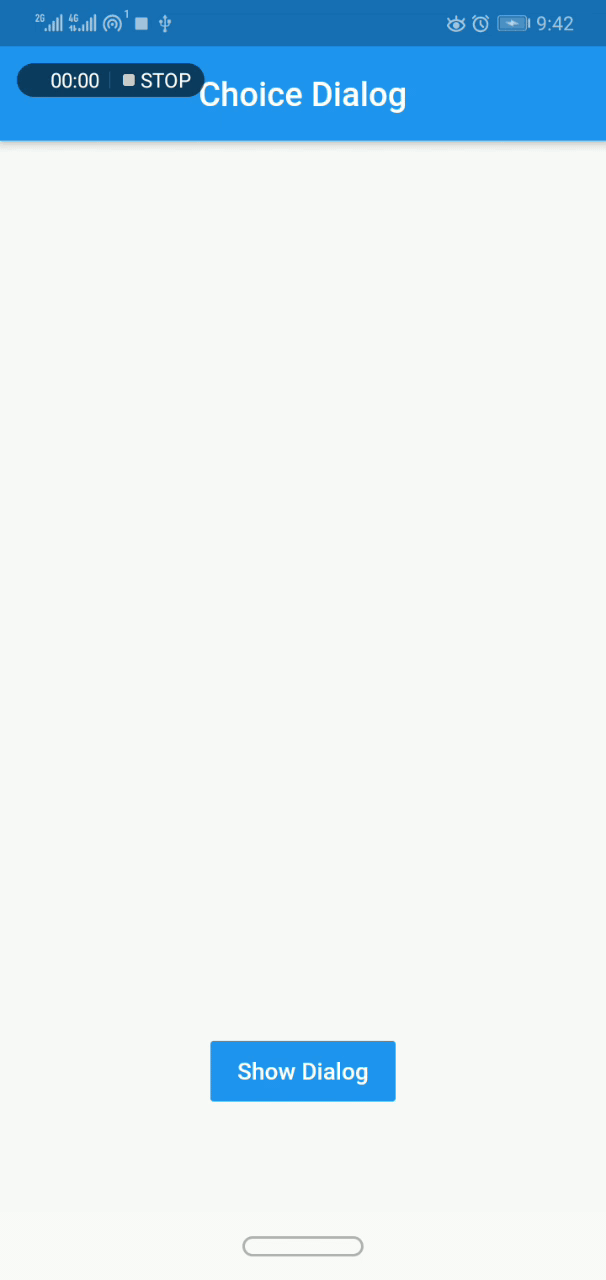
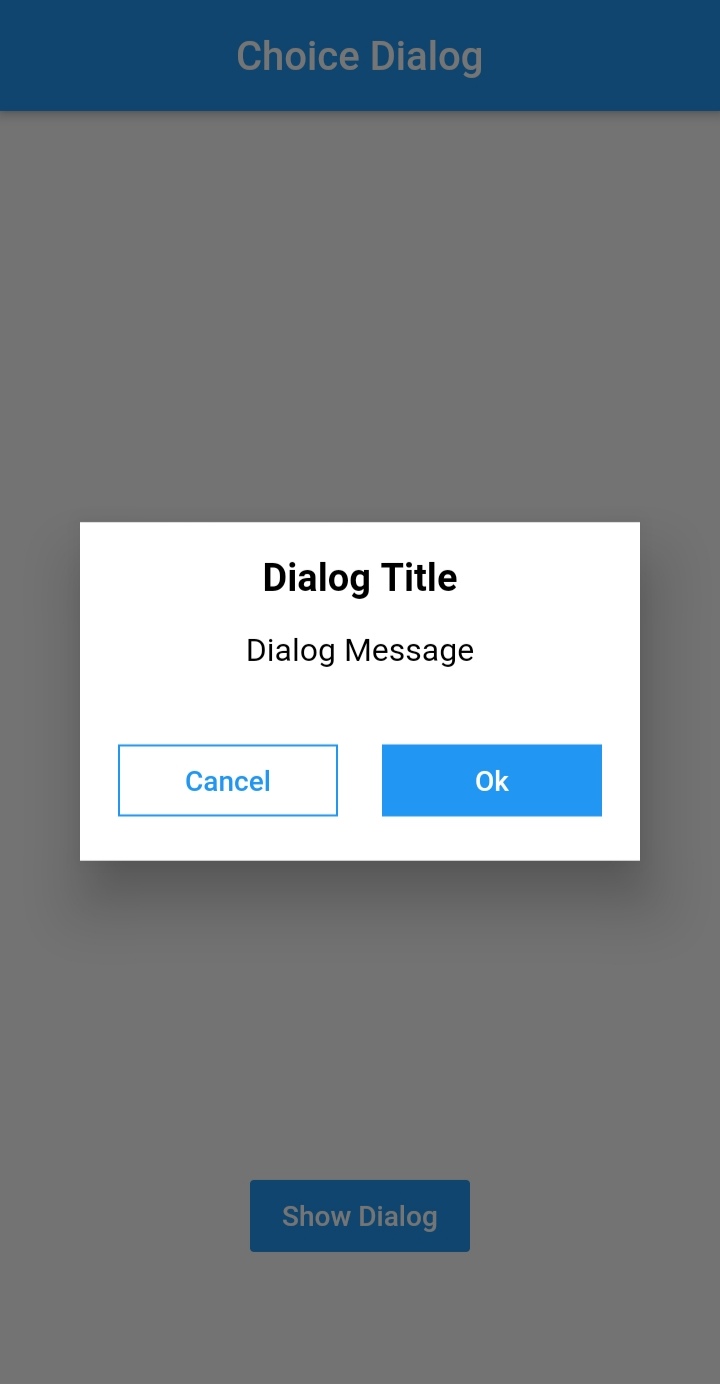
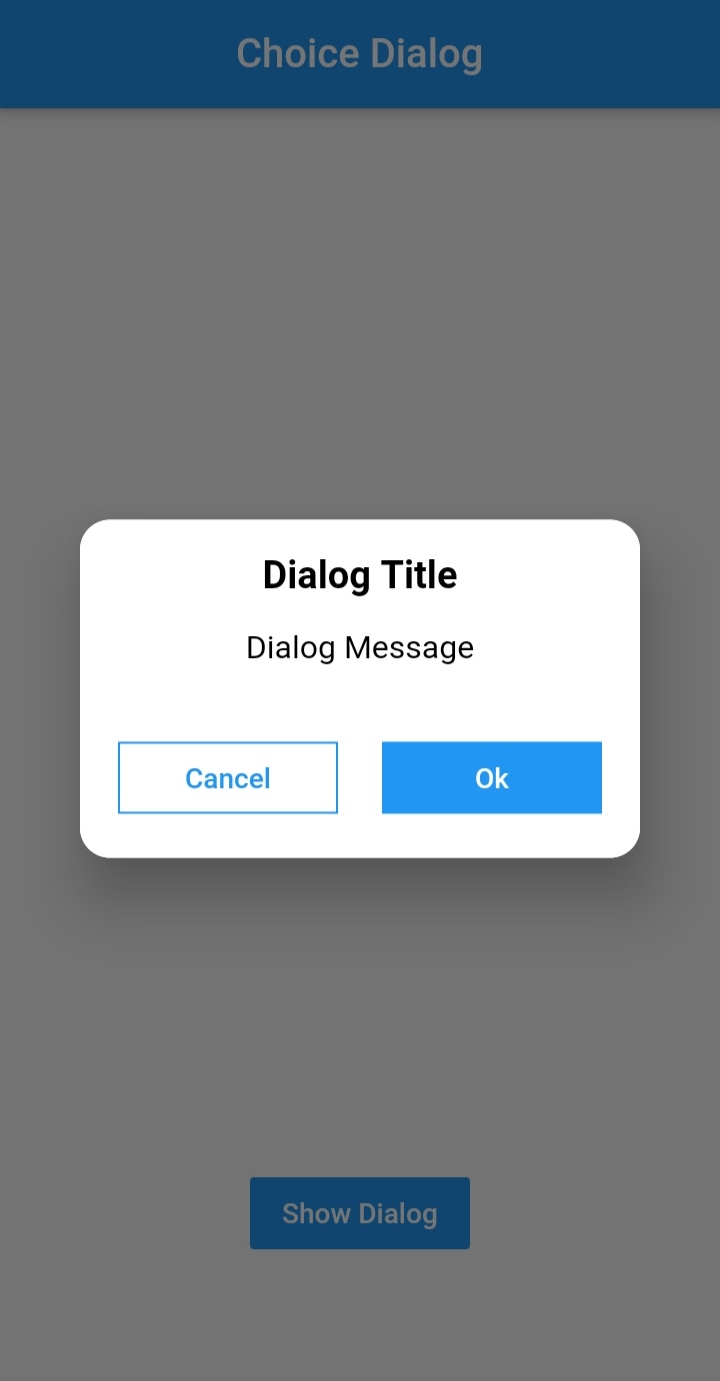
Message Dialog 示例图片
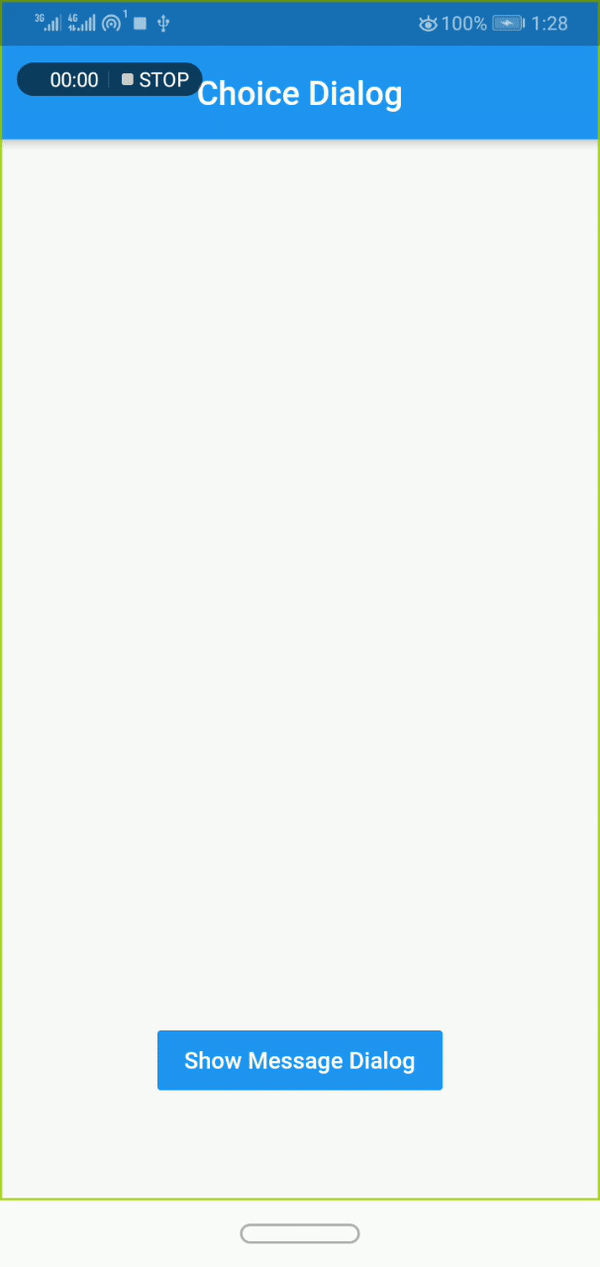
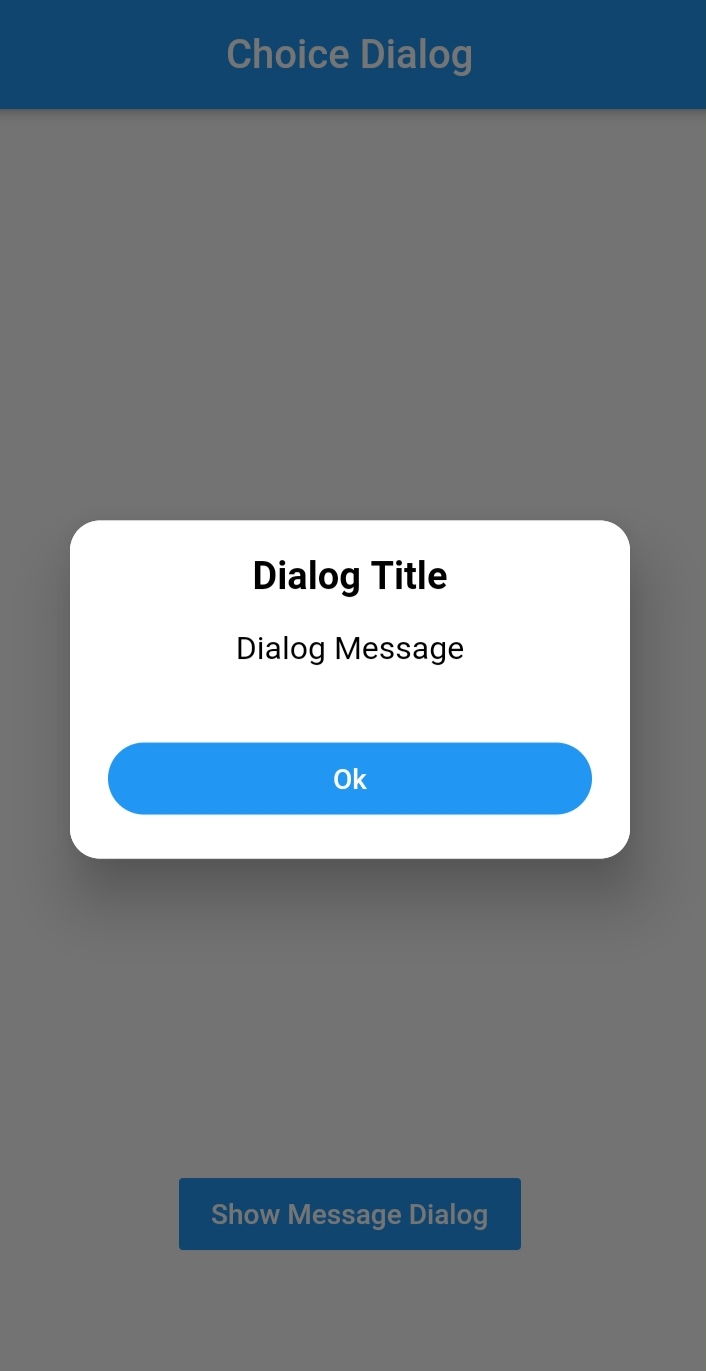
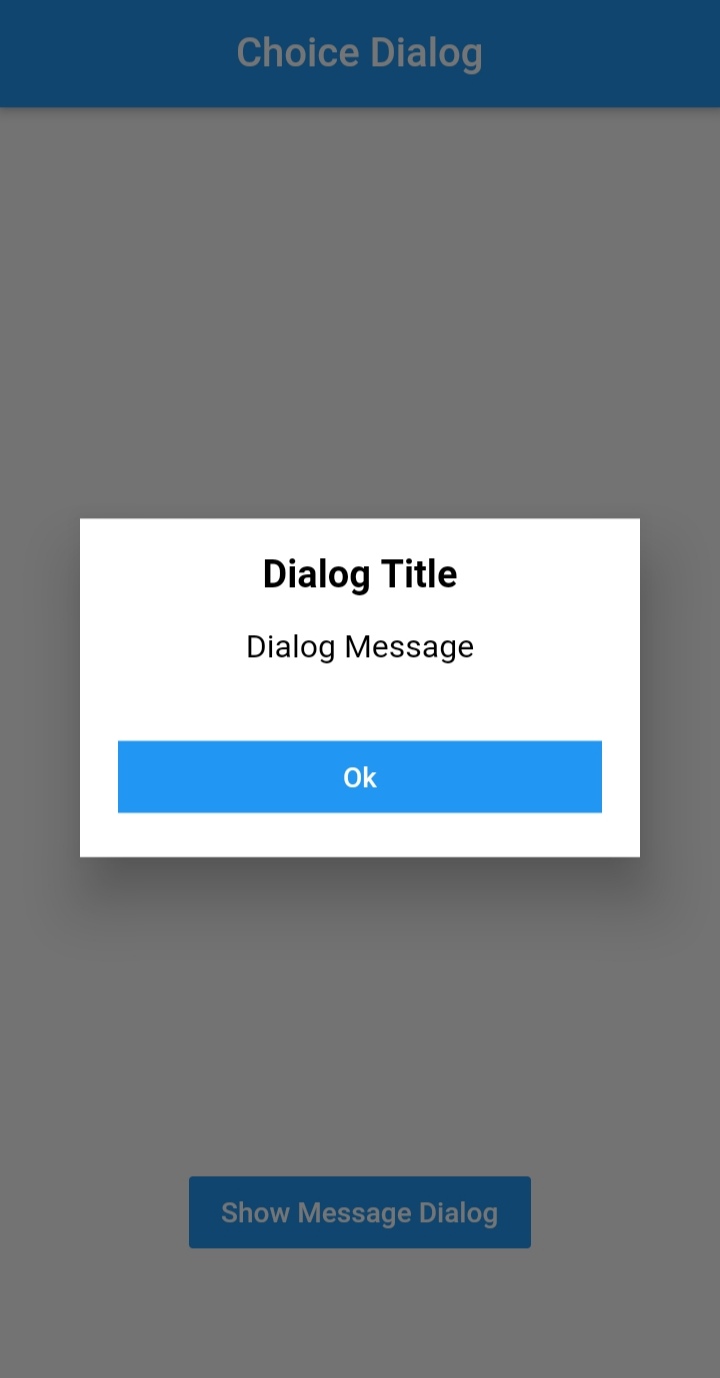
Simple Usage 简单使用方法
要使用此插件,请在您的 pubspec.yaml 文件中添加 dialogs 作为依赖项。
Implementation 实现步骤:
-
导入包:
import 'package:dialogs/dialogs.dart'; -
使用
ChoiceDialog().show()函数来显示对话框。// 显示选择对话框 ChoiceDialog().show(context); // 或者 final choiceDialog = ChoiceDialog(); choiceDialog.show(context); -
使用
MessageDialog().show()函数来显示消息对话框。// 显示消息对话框 MessageDialog().show(context); // 或者 final messageDialog = MessageDialog(); messageDialog.show(context); -
显示进度对话框:
// 创建一个进度对话框实例 ProgressDialog progressDialog = ProgressDialog( context: context, backgroundColor: Colors.blue, textColor: Colors.white, ); // 显示对话框 progressDialog.show(); // 关闭对话框 progressDialog.dismiss();
完整示例代码
以下是一个完整的示例,展示了如何在应用程序中使用 dialogs 插件的不同功能:
import 'package:dialogs/dialogs.dart';
import 'package:flutter/material.dart';
class MessageDialogExample extends StatefulWidget {
MessageDialogExample({Key key}) : super(key: key);
[@override](/user/override)
_MessageDialogExampleState createState() => _MessageDialogExampleState();
}
class _MessageDialogExampleState extends State<MessageDialogExample> {
final navigatorKey = GlobalKey<NavigatorState>();
[@override](/user/override)
Widget build(BuildContext context) {
return Scaffold(
appBar: AppBar(
title: Text('Dialogs'),
centerTitle: true,
),
body: Container(
alignment: Alignment.center,
margin: const EdgeInsets.only(bottom: 60.0),
child: Column(
mainAxisAlignment: MainAxisAlignment.end,
crossAxisAlignment: CrossAxisAlignment.center,
children: <Widget>[
// 显示选择对话框按钮
TextButton(
style: ButtonStyle(
backgroundColor: MaterialStateProperty.all(
Colors.blue,
),
foregroundColor: MaterialStateProperty.all(Colors.white),
),
onPressed: () {
final choice = ChoiceDialog(
dialogBackgroundColor: Colors.white,
);
choice.show(context);
},
child: Text('Show Choice Dialog')),
// 显示消息对话框按钮
TextButton(
style: ButtonStyle(
backgroundColor: MaterialStateProperty.all(
Colors.blue,
),
foregroundColor: MaterialStateProperty.all(Colors.white),
),
onPressed: () async {
MessageDialog messageDialog = MessageDialog(
dialogBackgroundColor: Colors.white,
buttonOkColor: Colors.red,
title: 'Dialog Title',
titleColor: Colors.black,
message: 'Dialog Message',
messageColor: Colors.black,
buttonOkText: 'Ok',
dialogRadius: 15.0,
buttonRadius: 18.0,
iconButtonOk: Icon(Icons.one_k));
messageDialog.show(context, barrierColor: Colors.white);
},
child: Text(
'Show Message Dialog',
)),
// 显示进度对话框按钮
TextButton(
style: ButtonStyle(
backgroundColor: MaterialStateProperty.all(
Colors.blue,
),
foregroundColor: MaterialStateProperty.all(Colors.white),
),
onPressed: () async {
ProgressDialog progressDialog = ProgressDialog(
context: context,
backgroundColor: Colors.blue,
textColor: Colors.white,
);
progressDialog.show();
Future.delayed(Duration(seconds: 3))
.then((value) => progressDialog.dismiss());
},
child: Text(
'Show Progress Dialog',
)),
],
),
),
);
}
}
更多关于Flutter对话框管理插件dialogs的使用的实战系列教程也可以访问 https://www.itying.com/category-92-b0.html
更多关于Flutter对话框管理插件dialogs的使用的实战系列教程也可以访问 https://www.itying.com/category-92-b0.html
当然,我可以为你提供一个关于如何在Flutter中使用dialogs插件管理对话框的示例代码。dialogs插件提供了一系列便捷的对话框构建方法,可以简化对话框的创建和使用。
首先,你需要在pubspec.yaml文件中添加dialogs依赖:
dependencies:
flutter:
sdk: flutter
dialogs: ^2.0.2 # 请检查最新版本号
然后运行flutter pub get来安装依赖。
以下是一个简单的示例,展示了如何使用dialogs插件来显示不同类型的对话框:
import 'package:flutter/material.dart';
import 'package:dialogs/dialogs.dart';
void main() {
runApp(MyApp());
}
class MyApp extends StatelessWidget {
@override
Widget build(BuildContext context) {
return MaterialApp(
title: 'Flutter Dialogs Example',
theme: ThemeData(
primarySwatch: Colors.blue,
),
home: MyHomePage(),
);
}
}
class MyHomePage extends StatefulWidget {
@override
_MyHomePageState createState() => _MyHomePageState();
}
class _MyHomePageState extends State<MyHomePage> {
@override
Widget build(BuildContext context) {
return Scaffold(
appBar: AppBar(
title: Text('Flutter Dialogs Example'),
),
body: Center(
child: Column(
mainAxisAlignment: MainAxisAlignment.center,
children: <Widget>[
ElevatedButton(
onPressed: () {
showAlertDialog(context);
},
child: Text('Show Alert Dialog'),
),
SizedBox(height: 20),
ElevatedButton(
onPressed: () {
showConfirmationDialog(context);
},
child: Text('Show Confirmation Dialog'),
),
SizedBox(height: 20),
ElevatedButton(
onPressed: () {
showLoadingDialog(context);
Future.delayed(Duration(seconds: 2)).then((_) {
Navigator.of(context).pop(); // Simulate some async operation
});
},
child: Text('Show Loading Dialog'),
),
],
),
),
);
}
void showAlertDialog(BuildContext context) {
showDialog(
context: context,
builder: (BuildContext context) {
return AlertDialog(
title: Text('Alert Dialog'),
content: Text('This is an alert dialog.'),
actions: <Widget>[
TextButton(
onPressed: () {
Navigator.of(context).pop();
},
child: Text('OK'),
),
],
);
},
);
}
void showConfirmationDialog(BuildContext context) {
showDialog(
context: context,
builder: (BuildContext context) {
return ConfirmDialog(
title: 'Confirmation',
content: 'Are you sure you want to proceed?',
confirmText: 'Yes',
onConfirm: () {
Navigator.of(context).pop(true);
},
cancelText: 'No',
onCancel: () {
Navigator.of(context).pop(false);
},
);
},
).then((value) {
if (value == true) {
// User confirmed
ScaffoldMessenger.of(context).showSnackBar(SnackBar(content: Text('Confirmed')));
} else {
// User cancelled
ScaffoldMessenger.of(context).showSnackBar(SnackBar(content: Text('Cancelled')));
}
});
}
void showLoadingDialog(BuildContext context) {
showDialog(
context: context,
barrierDismissible: false, // User can't dismiss the dialog by tapping outside
builder: (BuildContext context) {
return LoadingDialog(
message: 'Loading...',
);
},
);
}
}
在这个示例中,我们展示了三种不同类型的对话框:
- AlertDialog:使用Flutter内置的
AlertDialog类。 - ConfirmDialog:使用
dialogs插件提供的ConfirmDialog类,该类封装了常见的确认对话框逻辑。 - LoadingDialog:使用
dialogs插件提供的LoadingDialog类,用于显示加载状态的对话框。
这些对话框展示了如何在Flutter应用中管理不同类型的用户交互对话框。你可以根据需要自定义对话框的样式和行为。








